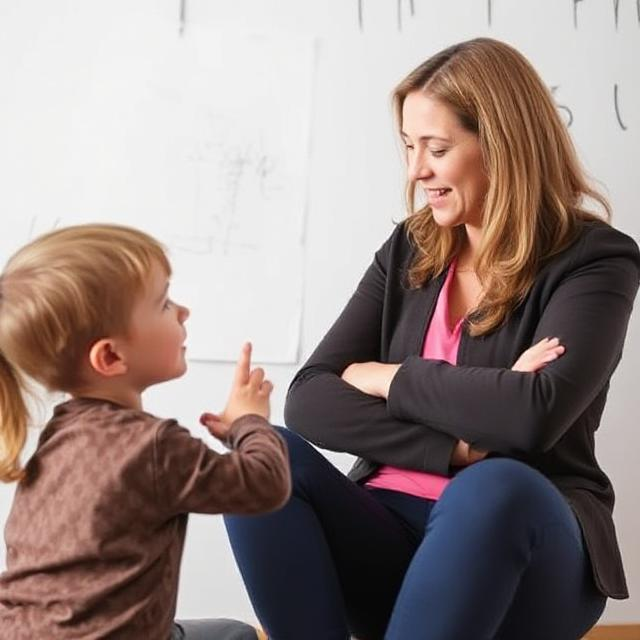Dealing With Separation Anxiety In Young Children
Separation anxiety in young children is a common and natural part of their emotional development, especially during certain stages like infancy, toddlerhood, and preschool years. It typically occurs when a child is separated from their primary caregiver, such as when going to school or daycare, or when a parent leaves the house. While separation anxiety can be challenging for both children and parents, it can be managed with patience, empathy, and strategies that help children feel secure and supported.
Understanding Separation Anxiety:
Separation anxiety is a child’s emotional reaction to being separated from a parent or caregiver. It can manifest as crying, clinging, refusing to go to school or daycare, or expressing fear about being away from a caregiver. This type of anxiety is most common between 6 months and 3 years of age, though it can appear later as well.
Strategies for Dealing with Separation Anxiety:
1. Create a Consistent Routine
-
Predictable Goodbyes: Establishing a consistent goodbye routine can help the child understand what to expect and feel more secure. A short but comforting goodbye ritual—like a special handshake, hug, or saying “I love you”—lets the child know that the separation is temporary and they’ll be safe.
-
Routine and Structure: Children feel more secure when they know what’s coming next. Having consistent drop-off times, meal times, and sleep routines can provide a sense of stability and predictability for children with separation anxiety.
2. Keep Goodbyes Brief and Calm
-
Don’t Drag It Out: While it’s tempting to reassure your child repeatedly or delay leaving, doing so can actually increase anxiety. A long, drawn-out goodbye can make the child feel like the separation is a bigger deal than it is. Instead, offer a calm, confident goodbye and reassure them that you’ll be back soon.
-
Stay Calm and Confident: Children often look to their parents for emotional cues. If you remain calm and confident, your child is more likely to feel secure. Express confidence that they will be fine and that you’ll return as planned.
3. Offer Comfort and Reassurance
-
Reassure Your Child: Before the separation, reassure your child that they will be safe and that you will come back. Use simple, age-appropriate language: “I’m going to work, but I’ll be back when you wake up from your nap.”
-
Validate Their Feelings: Acknowledge your child’s feelings without minimizing them. Say something like, “I know you’re feeling sad because I’m leaving. It’s okay to feel that way. I’ll be back soon,” which helps them feel understood and supported.
4. Gradual Separation
-
Start Small: For children with severe separation anxiety, it can help to start with short separations and gradually increase the length of time apart. For example, you can start by leaving them with a trusted relative or friend for a few minutes and then gradually build up to longer separations.
-
Practice Short Goodbyes: Practice saying goodbye in situations where there’s no real separation (e.g., going to the next room and then coming back). This can help them build confidence that you always return.
5. Establish a Familiar Comfort Item
-
Transitional Objects: Giving your child a familiar object, like a favorite stuffed animal or blanket, can provide emotional comfort and security when they’re separated from you. These objects can act as a bridge to help them feel connected to you even when you’re not physically present.
-
Special Keepsakes: Some parents use a picture of themselves or a special note that the child can carry with them, helping to reduce feelings of separation.
6. Encourage Independence Gradually
-
Build Confidence in the Child’s Environment: Allow your child to gradually get used to other trusted adults, such as teachers, caregivers, or family members. If they develop a relationship with someone they trust outside of the immediate family, it can help reduce their fear of separation.
-
Empower the Child: Give your child opportunities to make small decisions that help them feel more in control, like choosing what clothes to wear or picking a snack. This boosts their confidence and helps them feel more secure when they are separated from you.
7. Stay Positive About the Separation
-
Speak Positively About Separation: Children often pick up on how parents feel about separations. Talk positively about school, daycare, or the activity they are going to, helping them associate it with something enjoyable rather than something to fear.
-
Praise Their Progress: When your child does well with a separation, whether it’s a short goodbye or staying with a caregiver without crying, be sure to praise their bravery. Positive reinforcement can encourage them to handle separations with more confidence in the future.
8. Keep the Drop-Off Brief and Positive
-
Consistency is Key: At drop-off, be consistent. Ensure your child knows what will happen and that you will return at the agreed time. Saying goodbye once and not returning for a few minutes can cause confusion and anxiety.
-
Avoid Sneaking Away: While it might feel easier to sneak away when your child isn’t looking, this can actually increase anxiety when they realize you’ve left without them noticing. It’s important to let them know you’re leaving in a calm and reassuring way.
9. Give Time for Adjustment
-
Allow Time to Adapt: Separation anxiety may not disappear overnight. It’s important to give your child time to adjust and understand that separations are a normal part of life. Be patient and understanding as they learn to cope with these feelings.
-
Consider Their Personality: Some children are naturally more anxious or sensitive, and this may make separation harder for them. Respect their temperament and adjust your approach to their unique needs.
10. Work with Teachers or Caregivers
-
Collaborate with Caregivers: If your child is attending daycare or preschool, work closely with the teachers or caregivers to ensure that the separation process is handled consistently. Share any strategies you’re using at home to help ease anxiety.
-
Stay in Touch: Regularly check in with your child’s caregiver to see how they’re doing after drop-off. Knowing that your child is settling in and receiving comfort and support during separation can reassure you that they are doing okay.
When to Seek Professional Help
While separation anxiety is a common developmental stage, in some cases, it can become more intense or persistent. If your child’s anxiety seems extreme or continues beyond a typical age range (4-5 years), or if it significantly interferes with their ability to function (e.g., not going to school or engaging in daily activities), it may be helpful to seek guidance from a pediatrician, therapist, or child psychologist. They can offer support and additional strategies to help manage the anxiety.




